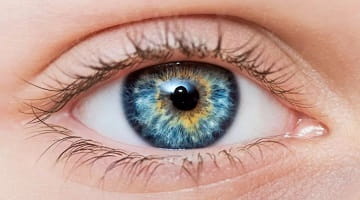Sinuses shed light on how humans got their unique skull shape
They are most-commonly associated with a blocked nose and headaches but the humble sinuses could hold an important key to the evolution of the human face.
Sinuses - the cavities between the brain and the face - have changed vastly in size and shape over the evolution, according to the largest study of its kind by international paleoanthropologists, including Dr Laura Buck of Liverpool John Moores University.
In early hominins (human-relatives) and non-human apes, the size and shape of frontal sinuses is directly related to the amount of space available for them to grow into. Their variation in later humans, including us, suggests a change in the way the skull is organised and develops.
“This may tell us about why our (Homo sapiens) skulls look the way they do,” explained Dr Buck, of the School of Biological and Environmental Sciences at LJMU.
Brain expansion
“In later humans, the face and braincase seem to be able to develop more independently from one-another, uncoupling the relationship between sinus shape and skull shape, The greater independence of face and braincase may be related to brain expansion in later hominins.”
The four sets of air-filled cavities located in the face around your nose – are known as sinuses but it is not entirely known what they are for. One theory is that they help warm and humidify the air we breathe in. Another is that they help distribute stress from chewing.
These poorly understood structures could provide valuable insights into the evolutionary relationships between species.
This new study led by Antoine Balzeau, a paleoanthropologist from the Muséum nationale d’Histoire naturelle, France, and published today (October 21, 2022) in Science Advances, takes the most detailed look to date at the evolution of these structures, based on examination of almost all of the available hominin fossil record.
Using measurements from CT imaging of these fossils, the team compared the variation in the position, shape and dimensions of the sinuses over millions of years.
In chimpanzees, bonobos and gorillas, the size of the frontal sinuses is correlated with the size of the skull, and this is also the case in the first species of the human lineage (Sahelanthropus tchadensis, the Australopithecus and Paranthropus species).
'Illuminate different species'
By contrast, from Homo erectus, about 2 million years ago, onwards human species show wide variation in frontal sinuses. Those of Homo neanderthalensis have a particular and distinctive shape and the sinuses of some Middle Pleistocene specimens, such as Petralona, Bodo and Broken Hill (which have been assigned to different species without reaching a consensus), are gigantic and have a unique shape, which distinguishes them from all other fossil groups.
Covariation between the size and shape of the sinuses and the frontal lobes (the front part of the brain), was also observed showing that brain development from Homo erectus onwards has had an influence on the shape of the frontal sinuses.
Antoine said: “What we discovered gives the humble sinuses a real potential to illuminate evolutionary relationships between more recent species, and also allow us to invalidate several hypotheses, including the idea that Neanderthals’ face cavities were the result of adaptation to a cold climate.
“We can say that the development of the frontal sinuses in the different human species is not directly conditioned by biomechanical constraints resulting from mastication or adaptation to the climate.
“Rather, these small air bubbles present in our skulls have a shape and dimensions that derive from our genetic heritage, as a species and as an individual, from the shape of our brain and that of our skull and are also random.”
ends


